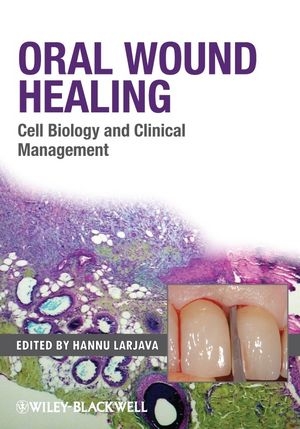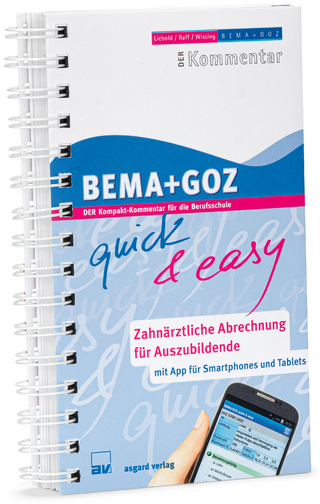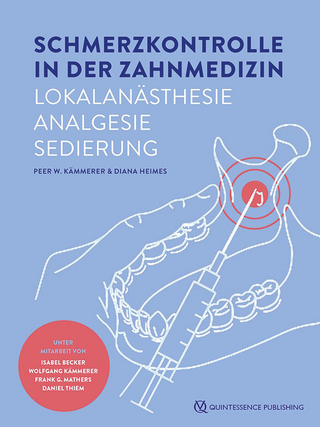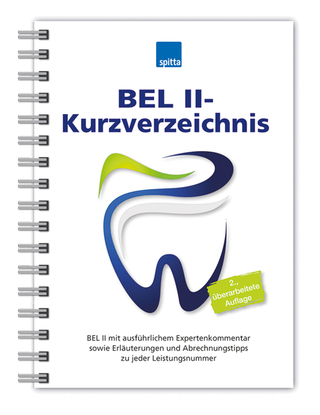
Oral Wound Healing
Wiley-Blackwell (Verlag)
978-0-8138-0481-1 (ISBN)
- Titel z.Zt. nicht lieferbar
- Versandkostenfrei innerhalb Deutschlands
- Auch auf Rechnung
- Verfügbarkeit in der Filiale vor Ort prüfen
- Artikel merken
Oral Wound Healing: Cell Biology and Clinical Management brings experts from around the world together to provide an authoritative reference on the processes, principles and clinical management of wound healing in the oral mucosa. Promoting a thorough understanding of current research on the topic, this new resource draws together thinking on the basic biological processes of wound healing in the oral environment, as well as providing more detailed information and discussion on processes such as inflammation, reepithelialization and angiogenesis. Beyond this, the book goes on to examine topics pertinent to the effective clinical management of oral wound healing, bringing together chapters on large dento-facial defects, dental implants, periodontal regeneration, and pulp healing.An essential synthesis of current research and clinical applications, Oral Wound Healing will be an indispensable resource for dental specialists, oral and maxillofacial surgeons as well as researchers in oral medicine and biology.
Hannu Larjava, DDS, PhD, DipPerio is Professor and Chair of the Division of Periodontics at the University of British Columbia Faculty of Dentistry.
Contributors xiii Preface xvii
1 Oral Wound Healing: An Overview 1
Hannu Larjava
Clotting and inflammation (chapters 2, 3 and 4) 1
Re-epithelialization and granulation tissue formation (chapters 5 and 6) 2
Angiogenesis (chapter 7) 3
Healing of extraction sockets (chapter 8) 4
Flap design for periodontal wound healing (chapter 9) 4
Regeneration of periodontal tissues (chapters 10 and 11) 5
Osteointegration and soft tissue healing around dental implants (chapter 12) 6
The pulp healing process (chapter 13) 7
Dermal wound healing and burn wounds (chapter 14) 7
Healing of large dentofacial defects (chapter 15) 8
References 9
2 Hemostasis, Coagulation and Complications 11
Carol Oakley and Hannu Larjava
Introduction 11
Primary hemostasis 12
Secondary hemostasis and the coagulation system 13
Tertiary hemostasis 16
Tissue factor 16
Von willebrand factor 17
Other coagulation factors 17
Cell-centric model of hemostasis: from initiation to propagation 18
The procoagulant membrane 20
Membrane particles 22
Endothelium and hemostasis 22
Pro- and anticoagulant functions 22
Platelets 24
Coagulation and wound healing 26
Limitations of the waterfall cascade model and screening laboratory tests 26
Implications for laboratory tests 27
Pre-surgical evaluation to prevent bleeding problems 27
Conclusions 32
References 32
3 Inflammation and Wound Healing 39
Anna Turabelidze and Luisa Ann DiPietro
Introduction 39
The innate immune response in wounds 39
Inflammatory cell infiltration into wounds 40
Inflammatory cell function in wounds 41
Cytokines and chemokines in wounds 44
Inflammation in oral mucosal wounds 47
Inflammation in fetal wounds 48
Role of inflammation in keloids 49
Inflammation and diabetic wounds 49
Conclusions 50
References 50
4 Specialized Pro-resolving Lipid Derived Fatty Acid Mediators: Wiring the Circuitry of Effector Immune Homeostasis 57
Gabrielle Fredman and Charles N. Serhan
Inflammation: the cardinal signs 57
Complete resolution and tissue homeostasis is the ideal outcome of acute inflammation 58
Lipoxins, resolvins, protectins and maresins: semper vigilantes of anti-inflammation and pro-resolution 60
Resolution of inflammation is an actively regulated process in vivo 66
Resolvins and protectins are protective in experimental models of inflammatory diseases 67
Specialized pro-resolving lipid mediators in oral medicine: restoration of tissue homeostasis in experimental periodontitis 70
Resolution and wound healing 72
Anti-inflammation vs. Pro-resolution 72
Clinical implications and the development of stable analogs 74
Conclusions 74
Acknowledgments 75
References 75
5 Re-epithelialization of Wounds 81
Leeni Koivisto, Lari Häkkinen and Hannu Larjava
Introduction 81
Keratinocytes form a protective barrier between an organism and its environment 81
Keratinocytes are activated rapidly to restore the epithelial barrier after wounding 82
Many different factors contribute to re-epithelialization 84
Final stages of re-epithelialization 106
Failure to re-epithelialize: chronic wounds 107
Conclusions 107
References 108
6 Granulation Tissue Formation and Remodeling 125
Lari Häkkinen, Hannu Larjava and Leeni Koivisto
Introduction 125
Overview of connective tissue response to wounding 126
Wound healing stages 129
Origin and identity of wound fibroblasts 129
Granulation tissue formation 134
Connective tissue remodeling 151
Re-emergence of quiescent fibroblast phenotype 156
Specific features of oral mucosal wound healing 157
Conclusions 159
Acknowledgments 159
References 159
7 Angiogenesis and Wound Healing: Basic Discoveries, Clinical Implications and Therapeutic Opportunities 175
Peter J. Polverini
Introduction 175
How blood vessels develop 175
Early mechanistic insights into the angiogenic response: from solid tumors to chronic inflammation and wound healing 177
The role of other inflammatory cells in angiogenesis 179
Matrix molecules 180
Vascular endothelial growth factor and the modern era of angiogenesis research 181
Signaling networks of potential importance in wound neovascularization 182
Inhibitors of angiogenesis: important counterweights in wound neovascularization 184
The role of aberrant wound angiogenesis in the pathogenesis of diabetes mellitus 186
Conclusions 187
References 188
8 Wound Healing of Extraction Sockets 195
Roberto Farina and Leonardo Trombelli
Healing of extraction sockets 195
Factors influencing the healing of extraction sockets 202
Healing of extraction sockets following immediate implant placement 203
Does the use of reconstructive technologies alter the healing of extraction sockets? 211
Conclusions 223
References 223
9 Flap Designs for Periodontal Healing 229
Leonardo Trombelli and Roberto Farina
Flap management, wound stability and periodontal regeneration 229
Flap designs to achieve primary closure 230
Surgical treatment of periodontal intraosseous defects: technical hints 237
Conclusions 240
References 241
10 Periodontal Regeneration: Experimental Observations – Clinical Consequences 243
Ulf M.E. Wikesjö, Cristiano Susin, Jaebum Lee, Douglas P. Dickinson and Giuseppe Polimeni
Introduction 243
Wound healing 244
Periodontal wound healing 245
Periodontal regeneration – new attachment 247
Wound stability 248
Space provision 251
Wound closure for primary intention healing 256
Conclusions 256
Acknowledgment 257
References 257
11 Biological Agents and Cell Therapies in Periodontal Regeneration 261
Hannu Larjava, Yi Yang, Edward Putnins, Jyrki Heino and Lari Häkkinen
Introduction 261
Adjunct growth factors in periodontal wound repair 261
PDGF and IGF-1 in periodontal regeneration 262
Platelet-rich plasma in periodontal therapy 265
FGF-2 in periodontal regeneration 265
Growth and differentiation factor-5 in periodontal regeneration 266
Other growth factors in periodontal regeneration 267
Bioactive collagen-derived peptide in periodontal regeneration (PepGen P-15®) 267
Enamel matrix proteins in periodontal regeneration and wound healing 269
Stem cells in periodontal wound healing 273
Conclusions 275
References 275
12 Wound Healing Around Dental Implants 287
Cristina Cunha Villar, Guy Huynh-Ba, Michael P. Mills and David L. Cochran
Introduction 287
Historical development 287
Titanium – the metal of choice 290
Healing following implant placement 291
Peri-implant soft tissue healing 291
Implant/peri-implant mucosa interface 292
Peri-implant hard tissue healing 294
From healing to clinical application 296
Implant stability testing 297
Wound healing and loading protocols 302
Conclusions 303
References 304
13 The Pulp Healing Process: From Generation to Regeneration 313
Stéphane Simon, Anthony J. Smith, Philip J. Lumley, Paul R. Cooper, and Ariane Berdal
From generation to regeneration 313
At the molecular level 323
Conclusion 328
References 328
14 Dermal Wound Healing and Burn Wounds 333
Anthony Papp
Introduction 333
Burn injury 333
Skin anatomy 334
Burn depth 336
Wound healing 338
Treatment 340
Special features in perioral burns 342
Conclusions 343
References 344
15 Healing of Large Dentofacial Defects 347
George K.B. Sándor, Robert P. Carmichael, Leena P. Ylikontiola, Ahmed Jan, Marc G. DuVal and Cameron M.L. Clokie
Introduction 347
The need for bone 349
Bone healing 349
Surgical maneuvers to induce and promote healing of large defects 355
Specifically difficult wounds 383
Conclusions 391
References 392
Index 397
| Verlagsort | Hoboken |
|---|---|
| Sprache | englisch |
| Maße | 178 x 252 mm |
| Gewicht | 989 g |
| Themenwelt | Medizin / Pharmazie ► Zahnmedizin |
| ISBN-10 | 0-8138-0481-7 / 0813804817 |
| ISBN-13 | 978-0-8138-0481-1 / 9780813804811 |
| Zustand | Neuware |
| Haben Sie eine Frage zum Produkt? |
aus dem Bereich


